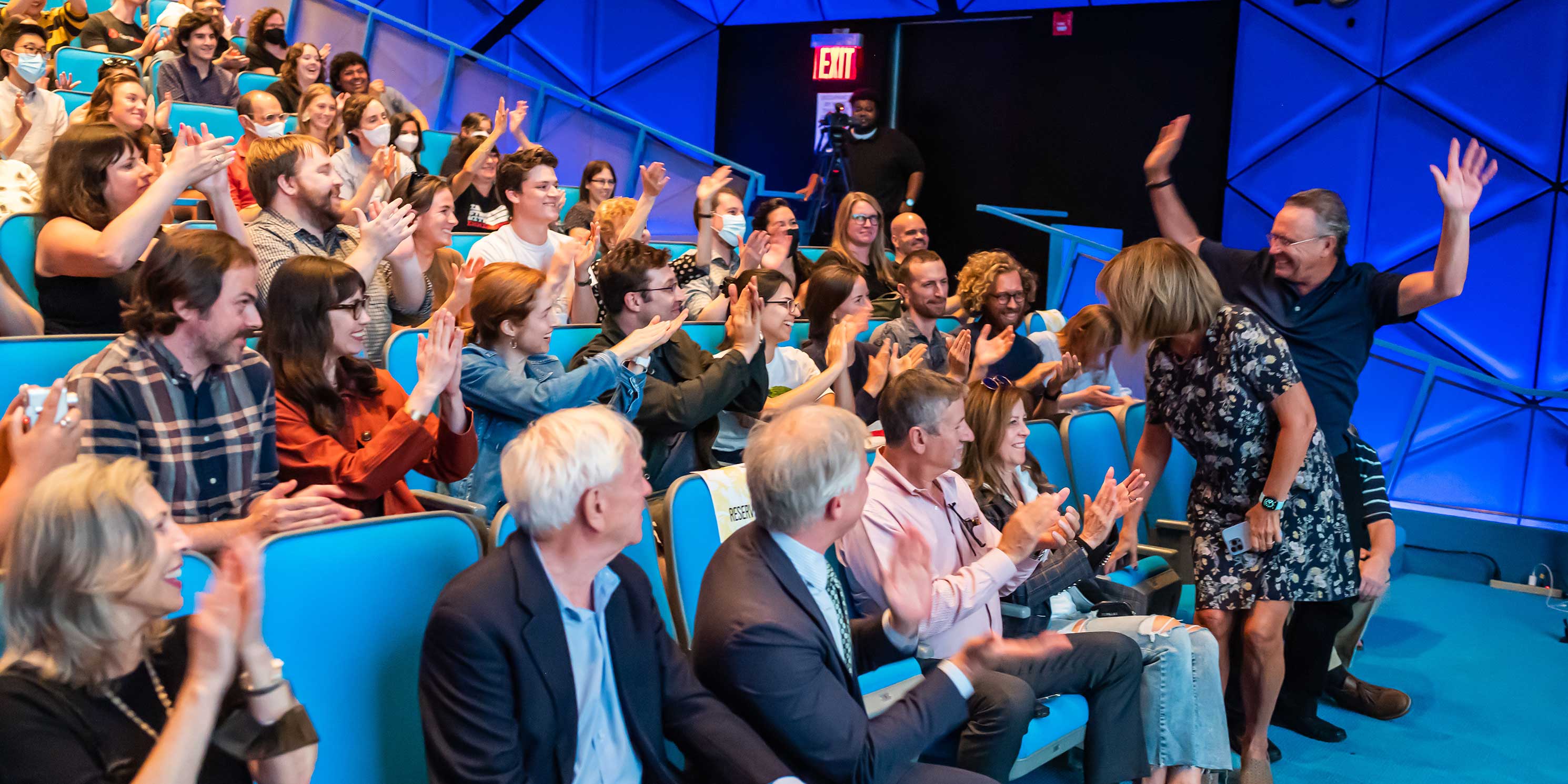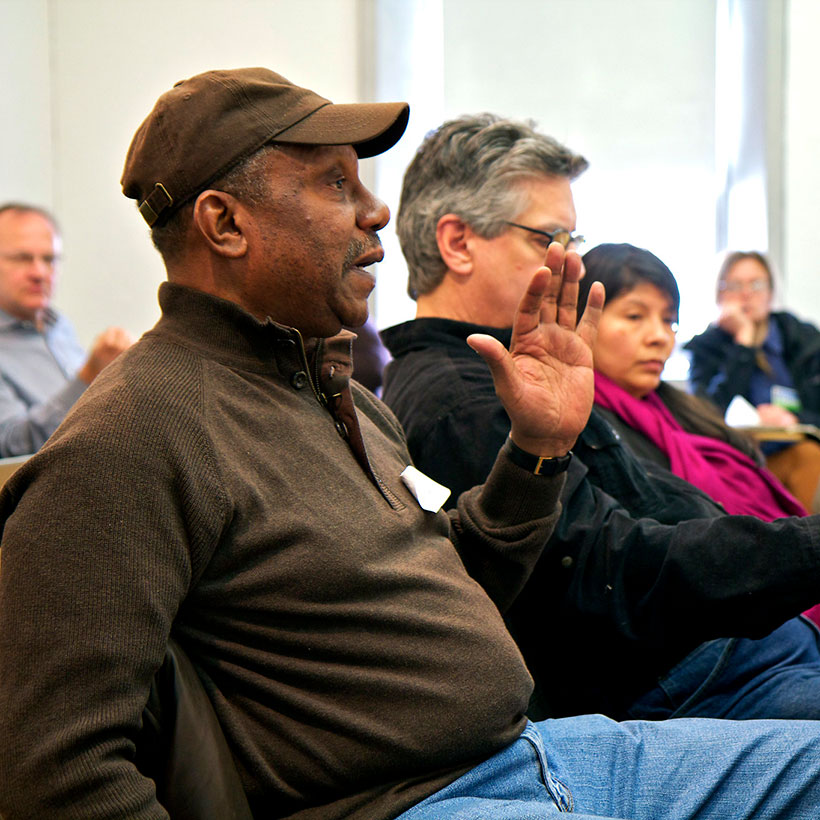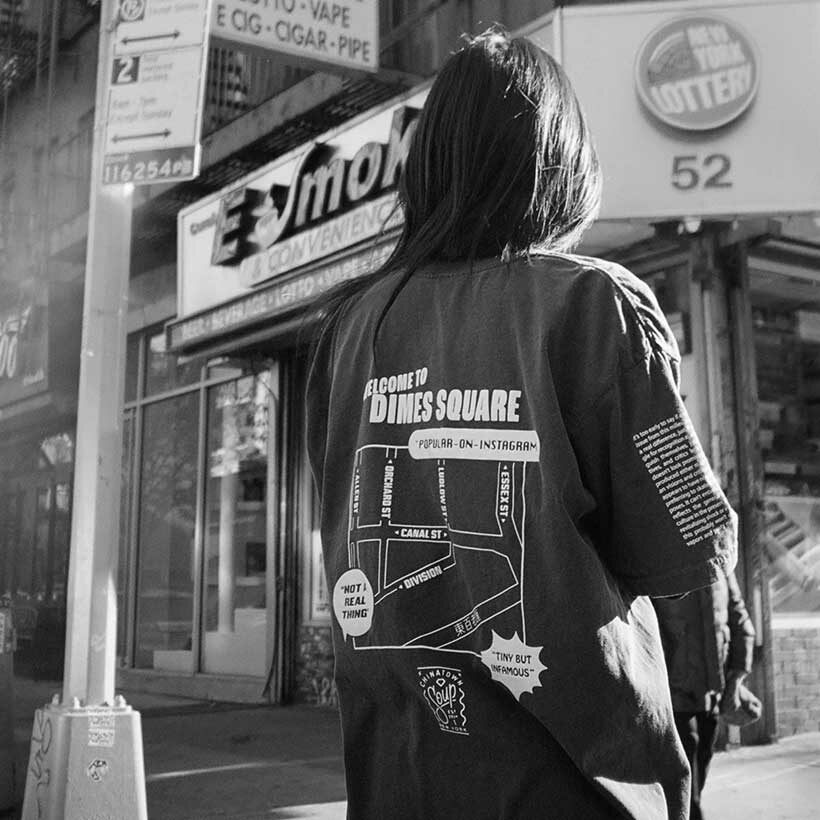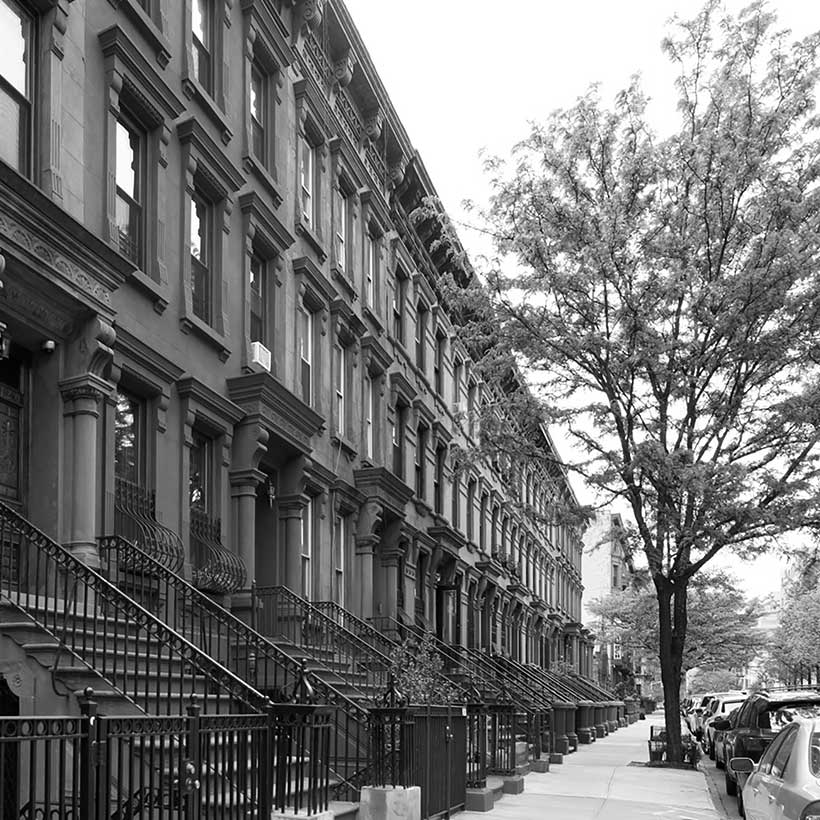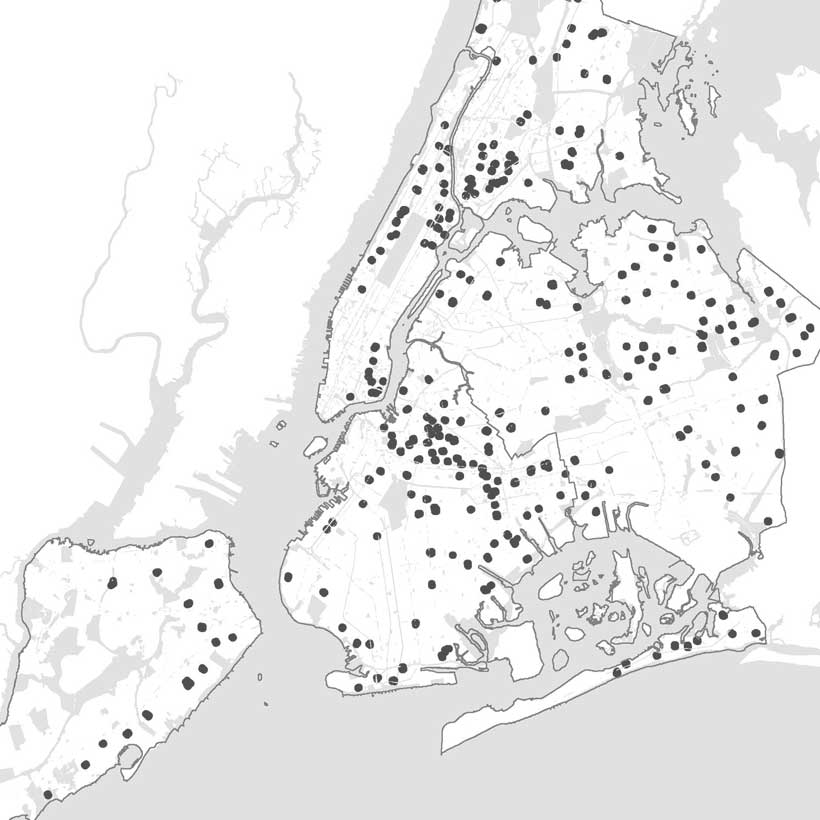Featured LNP Partner: CPO and Harlem OneStop
An interview with Yuien Chin, Executive Director, Hamilton Heights-West Harlem Community Preservation Organization and Harlem OneStop
Edited Lightly for Clarity
Spencer Williams: Thank you again, Yuien, for agreeing to do this interview. I’m really excited to bring your experience and expertise to the people that follow LNP and MAS. I think if you could start by telling us who you are, what role you have and how you came to that work.
Yuien Chin: Well, thank you for including me in this series of interviews and feedback from the community that LNP has engaged. I hope you know what I have to say, is informed by the LNP process, which also helped me learn more about leadership and advocacy work. The learning experience never stops, right?
It’s ongoing, there’s always something to learn, but a little about who I am. I live in Harlem, as you know, and have been a resident of West Harlem for the past 20-25 years or so.
I moved from midtown Manhattan to a neighborhood that I had no knowledge of other than what I had read in books. I had no idea of the area north of 59th street (Chuckles) until I was invited here to a social gathering and that was it, you know, it was love, at first sight.
I was swayed by the beauty of the architecture and just the kind of quiet, you know, peaceful environment which was really amazing considering that it was close to midtown. I had lived in midtown for a good 10-15 years and had not ventured north to Harlem, not because of a lack of interest but because of time and also because my social life was centered in midtown. And then, again, in the 70s and late 80s, Harlem wasn’t the best of places to visit. I may have ventured twice to East Harlem earlier, and only because I didn’t know, I was naïve about the area [laughs]. I went on my own for a photography class, and it was about taking pictures, walking around La Marqueta, the viaduct, and just being in the moment. It wasn’t until years after, “oh my God, I was in that place [laughs]. I didn’t realize how many safety issues that neighborhood had,” but, in any case, I found myself in Harlem in the late 80s and fell in love with it, with the architecture and the people, and I ended up purchasing a home here in Hamilton heights and settled in. Everything was just great. [I] met a lot of people, my neighbors, interestingly enough, were primarily homeowners and either seniors or single African American women caught up in restoring or renovating their homes. So, it was a wonderful cadre of like-minded people, you know, in terms of, “what type of building is this? Where can we get the best craftsman to do our floor?” It was a community of sharing information and dumpster diving [laughs]for architectural elements to replace the missing pieces in our homes. It was a wonderful time, and that went on for some years, and then two things happened: an incident on my block which, unbeknownst to the community was one in a series of attacks. It was appalling that no one knew about it. It wasn’t publicized by the local law enforcement nor in local media, so we were really appalled by that. And a group of us got together and decided we had to put it on blast. We called an emergency community-wide meeting, which was probably the first at that time, I recalled people saying, and we organized this meeting at a local church and invited all the elected officials, city agencies, law enforcement, churches and organizations, anyone who could provide some support in resolving the situation. We also divided into teams and went out flyering the district, the cars, the gates, and the doors of buildings. Looking back, it was a well-coordinated effort, resulting in a huge turnout. All the elected attended, from the Congressman down to the district leaders, and that was my introduction to any advocacy work because, you know, being from Jamaica (and)living in midtown where you sometimes don’t know your next-door neighbor, I mean what’s advocacy?. You live your life, and you go on, right? So, this was a huge, tremendous experience for me and an eye-opener. It was also exhilarating for all of us, and it demonstrated the power of coalitions, working together, and speaking in one voice to achieve the desired outcome.
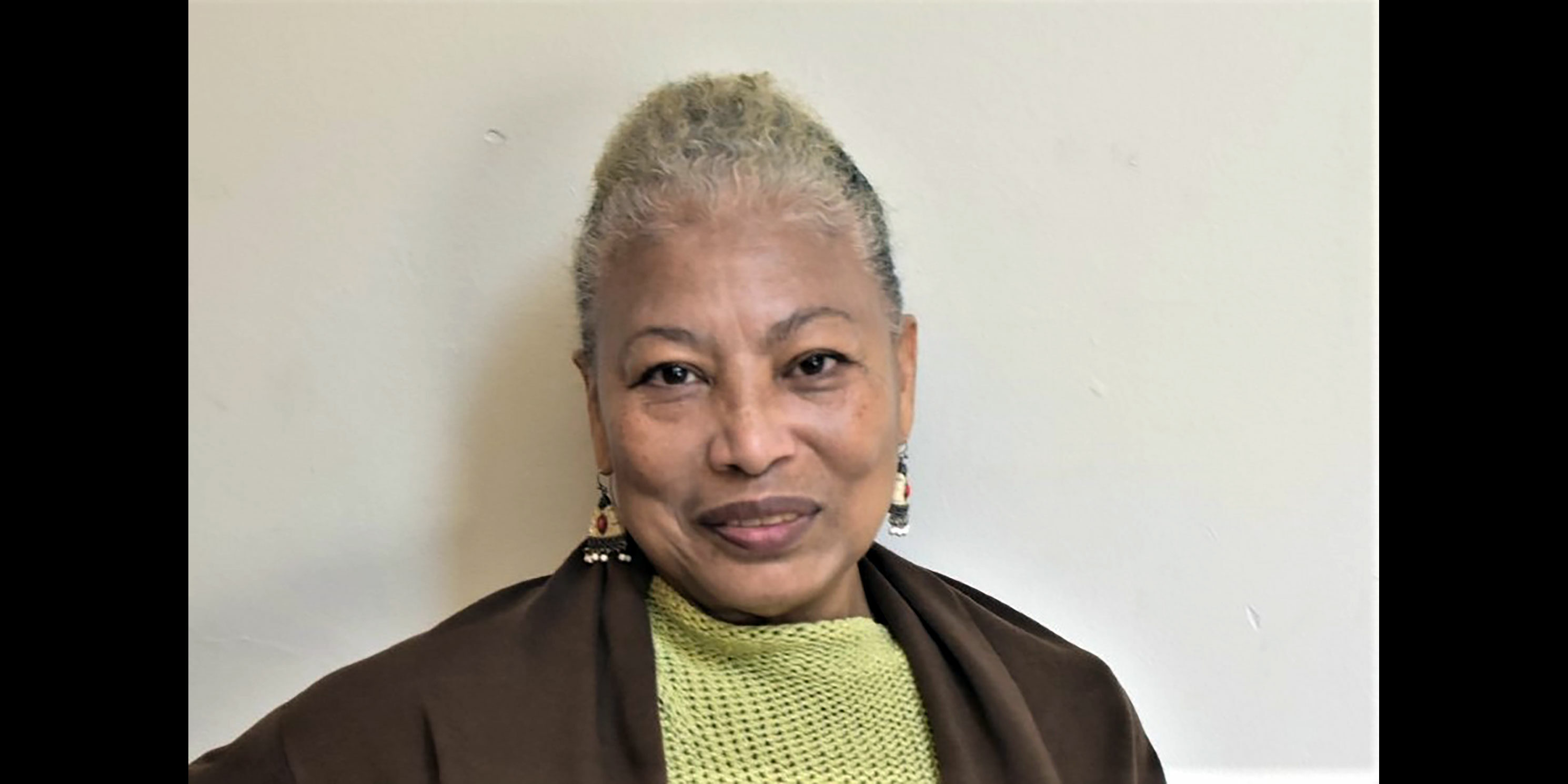
So that was one incident that sparked my interest in advocacy, and it was also the start of the West Harlem Community Preservation Organization.
The other thing that connected me to advocacy work was my involvement with the Hamilton Heights Homeowners Association, where I served as president for two terms. There, I became more attuned to the architecture – the built environment, this sense of place, and how special Hamilton Heights was. And then, in terms of local history, my curiosity and interest were awakened by colleagues or new friends. One, in particular, was Michael Henry Adams, to whom I owe a lot because I wouldn’t be here today doing this work if it were not for him. He opened my eyes to the local history and historic preservation.
He and another person, Carolyn Kent, now deceased. Carolyn was very active in Morningside Heights and was the chair of the community board landmarks committee. She also schooled me about the politics and challenges of landmarking. And that was the beginning of my interest in cultural and historic preservation.
Spencer Williams: And between the preservation corps and Harlem One Stop there’s a lot about recognizing history but also keeping it alive. What or who would you say that you’re primarily advocating for in the work that you do?
Yuien Chin: I’m advocating for the community, and I guess myself because I’m a part of the community.
Spencer Williams: Yeah, absolutely.
Yuien Chin: [Laughs] But, overall, I advocate issues that will improve my community’s quality of life. And, also promote, you know, a livable neighborhood.
For example, protecting the neighborhood’s historic character is very important to this community. Having established that, I turn to whatever available tools there are to achieve the outcome that we desire. And although, we are often criticized for being unrealistic in wanting to save or preserve too much, we are not blind to the fact that communities and neighborhoods need to evolve and grow. And also, the criticism is misplaced. We’re not opposed to new development. We acknowledge that for a community to grow and thrive, one has to accept new development projects. But we ask that new development projects be contextually appropriate in height, bulk, and placement, and more importantly, support and enhance the community’s infrastructure. It’s the same with starting Harlem One Stop, I mean, I advocate for the arts, but I’m not an arts practitioner. The Community and I benefit from the works of the local creative sector, and combined, both are at the intersection of what Harlem is about, and you’re telling the story, right? And especially for historic preservation, we are but keepers of the flame, stewards for the time we are on this earth. We all are responsible for safeguarding places and stories that matter and define our culture and neighborhoods, but in some areas, policymakers have done a terrible job in this regard. Here in Harlem, we have lost so much over the last two decades. What authentic experiences will there be for future generations if we continue on this path? We have to do better. But it isn’t easy. We have to ensure those past – those who contributed significantly to building neighborhoods and the country- are memorialized. Ideally, these stories are best told through places and artifacts, and in the absence of such, monuments are erected and signage installed. Still, the latter is not an acceptable substitute, especially if the authentic experience exists in some shape or form. So we advocate for preserving those places and things, giving them a voice through community action, and amplifying the narrative with storytelling, discussions, and interpretative programming to keep the history alive.
Spencer Williams: Yeah. I’m curious in your two decades plus of living in that neighborhood, how has your definition of community sort of expanded?
You’ve talked a lot about your entry into the neighborhood as this intergenerational, community elders, a bunch of new people, new homeowners, a lot of interesting intergenerational issues. Can you talk about how your definition of community continues to shift as the neighborhood changes.
Yuien Chin: Yeah. The community continues to change, and boundaries, depending on the issue, also shift or sometimes disappear, you know [laughs].
When advocating for any issue, I reach as far and wide as possible to bring in the expertise, knowledge, and experience to get us where we want to be, you know. Everyone has a place. Everyone contributes, and that is the wonder of advocacy work, how it all comes together in the very end.
Spencer Williams: In many ways, in many ways you’re speaking to, the community is sort of defined by the issue, right, and so your ability to be an effective advocate is to say that “this issue isn’t just about Hamilton Heights it’s about all of northern Manhattan,” or “it is a cultural issue and should have, by nature, more voices being a part of that conversation.”
Yuien Chin: Yes, because some of these issues are national, the disruption of neighborhoods by gentrification, the disparities in communities of color, and a pandemic demonstrated that, right? It’s across the board, so if we build our community base and expand our reference, the stronger we are. For example, my experience here in Harlem might benefit some other group somewhere who are at the place where I first started. They know what they want but need to know how to get there, which is the value of the LNP program. Because as you engage with these groups who are unfamiliar with the process and don’t know the steps, you, LNP, are providing a framework or a point of reference within which everyone learns. So, the idea of a community depends on what you’re talking about and how we can coalesce voices and action.
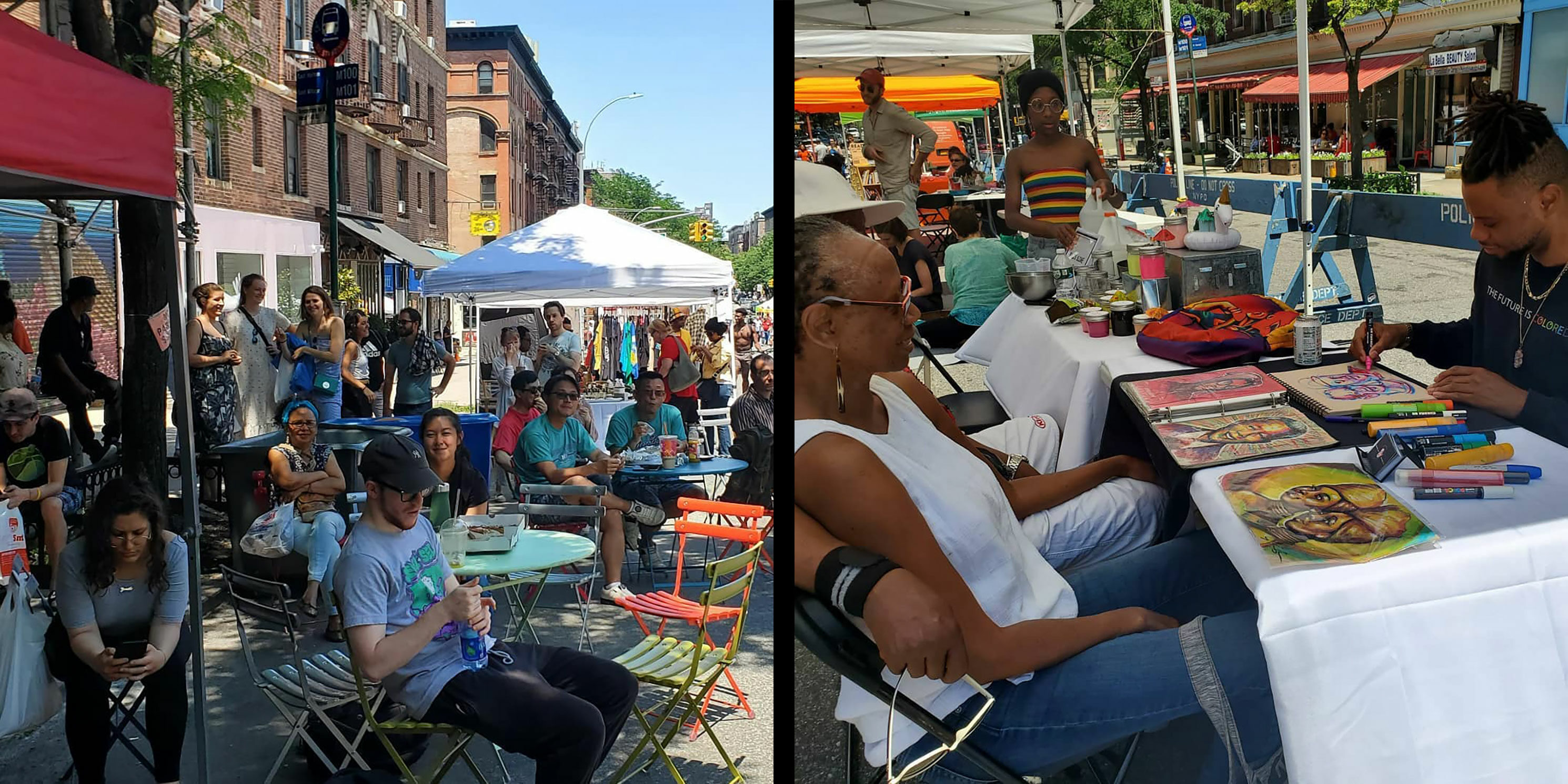
Spencer Williams: Yeah. I’m curious, what’s the biggest struggle that you’re facing now in the work and in the neighborhood? There’s certainly a lot of pandemic response. I remember when we were working together, there was a lot of focus on the business district. I’m sure that there’s been increased vacancy as a result of the last couple of years and number of street projects and removal of parking and safety issues that are going on but, what would you say that your biggest struggle that you’re tackling now is?
Yuien Chin: There are two things -two levels of struggle for our organization currently. Internally, the organization is under-resourced, so there is always that struggle. And then there are the external struggles, as you just said, especially now, with the impacts of the pandemic. Everyone is at a critical point in life adjusting to circumstances not faced before. Many are suffering from hardships and stress and are struggling to protect themselves from external forces such as home, job, health, and financial insecurities, to name a few. So, they’re not necessarily ready to connect on community issues as advocates because they are dealing with all these personal and destabilizing issues. For example, for the West Harlem State historic district we’re working on, pre-pandemic people may come out and help with flyering or getting involved with some aspect of pushing the project forward, but now they don’t have the time; they can’t be fully engaged. Technology has been a savior in disseminating information, getting feedback, and building a voice, but the personal connection, which is very important in advocacy work, is challenging to engage. Concerning the business sector, we continue to work with local businesses. We see pre-existing challenges for the merchant community exacerbated by the pandemic, and our struggle is getting their attention. Most of our small businesses are Latino-owned, and, in times of crisis, they tend to work within their community or circle, and there is mistrust for any new information coming their way. This approach is sometimes unfortunate because there are programs to their benefit and free City resources to help stabilize their businesses.
But still, we continue because we’re committed to the effort. For example, we recently received a Strategic Initiative Grant, which increased our outreach capacity and Spanish-language competency, resulting in some success with the merchant community. We were able to connect businesses to resources, free resources, and that was an eye-opener and a learning experience in understanding how small businesses operate and the daily challenges they face.
It’s a very unsettling time, but we do whatever we can to alleviate some of those pressures, however small.
Spencer Williams: Yeah. It’s a really difficult thing to build a sort of cross-cultural intergenerational community space. When I think of the work that you all do, a lot of it is hyper-social, right, it is passing out flyers, it is… A lot of what you talked about earlier with the strength of connections and social networks, they were really your pathways. Because you knew those homeowners’ association you are in community with those folks, then because you were invited into a party in a space, those are the ways in which you found yourself in conversation and in proximity to the people who shared interest, values, challenges, concerns. And so that’s really helpful to hear that a lot of those sort of same things, the flyering, the talking to people on the street, being on the stoops, having a physical presence in the neighborhood that’s visible, you know, sort of move beyond technology but are aided by technology certainly.
Yuien Chin: Yes, aided by technology and definitely not a replacement. Personal connection is and always will be important, especially in Latino communities. They don’t necessarily want to join a zoom call or read tons of emails. A lot of business and communication is done using mobile devices, and Whatsapp is the preferred method of communication. Likewise, with the newcomers to the neighborhood, everything is on a listserv within their group. So, although we have a very diverse community, and at the surface it works well and people get along, when you really delve deep in terms of community engagement, you will find it very difficult to connect because these groups are siloed. They may come together if the issue directly impacts them, but people retreat to their silos once that’s over.
Spencer Williams: Very interesting to think of people being in proximity, but not in the same place in that way so that you’re engaging one group on Facebook and one group through your newsletter and one group in person but trying to really come together. I’m curious if you can point to something that you feel like was markedly improved by your participation in it, and sort of what the difference that either the preservation corps or Harlem One Stop sort of made in getting something done or making progress in a particular area.
Yuien Chin: Made it better? Hmmm.
Spencer Williams: Or different, or easier.
Yuien Chin: In terms of historic preservation and the West Harlem community, it has made the neighborhood more stable. Protection of housing and structures within the historic districts brings a sense of relief that some sections are protected from overdevelopment for years to come. I can’t say in perpetuity because we might have a mayor in the future that comes in and resets the preservation clock back to square one. But rest assured that for now, historic preservation has stabilized the neighborhood, and for any changes to its historic fabric or character, there’s a framework within which new development would have to be presented and compliant. Historic preservation also allows us to explore creative options and strategies that could bring economic benefits to the neighborhood, such as tourism, and support small businesses. It also encourages entrepreneurship and investment in the community by residents and others.
For example, a high percentage of the small businesses and restaurants along our commercial corridors are operated by people who have lived in the neighborhood for quite some time or people who were attracted to the historic character of the area and recently moved here and decided that this is now their home, and they want to invest in their community and contribute to the economics of their neighborhood, and that’s great. I mean, it excites me whenever I see that happen, and I do whatever I can to support them. Harlem One Stop amplifies their presence and all of that.
The creation of Harlem One Stop also made access to the cultural landscape much better, I believe. Before Harlem One Stop, there was no comprehensive or centralized listing of the cultural landscape in Upper Manhattan, and, you know, I could not understand why there wasn’t one. I’m constantly walking around the neighborhood and constantly observing. I listen. I have conversations. I see where there is a need for something and, if possible, I can do it, you know, then I do it. And that was the case with Harlem One Stop.
I thought to myself at the time we needed something to tell people that not only does this neighborhood have a wonderful history, but the contemporary cultural landscape is even more exciting. There are all these cultural organizations here, interpreting the history and moving it forward-the music, dance, and all the other artistic movements that came before us, and everyone needs to know about it; but there was no centralized resource until we introduced Harlem One Stop and that I think has made access to the cultural landscape better here. Harlem One Stop supports small organizations and individual artists who might not have the budget or capacity to publicize their great work while informing and reconnecting people to the area’s history and legacy.
Harlem One Stop is the project I am most proud of, even more so than my historic preservation work, which I’m also very proud of; still I think Harlem One Stop is a project that has an impact, really fills a niche, and provides a much-needed and valuable service to the arts uptown, and tourism communities beyond.
Spencer Williams: Yeah, that’s really fantastic to hear the story of creating something out of a need, but also having demonstrated that you can designate and landmark neighborhood, then to go and expand like, this is also important because you’ve done it before, so you’ve sort of given yourself your own proof of concept. And that way of like, this is possible here because we did it, let’s go do it again.
Yuien Chin: It intersects, you know. We conduct neighborhood tours that are thematic tours drawn from the historical surveys, research, and designation reports we have done of the neighborhood, and we want to share that and re-engage community residents, as well as attract visitors to the area.
Spencer Williams: So, given all of that, is there anything that you wish that you knew before you started in this work?
Yuien Chin: Yeah. I don’t really spend a lot of time on regrets [laughs]. You know, it is what it is. I keep moving forward. But the one thing I wish I knew before starting, and that is the time everything takes. And the test of one’s patience, but I don’t see that it would have changed my mind. Knowing would have made me less frustrated; it would have relieved the stress a bit more, you know. The worry that I have set up all these expectations, and you know will I, will I be able to… you begin to question yourself when the process is unimaginable long and progresses slowly, and knowing that you’ve done as much as you can doesn’t help much. But now, I am older and wiser to the process. [laughs].
Spencer Williams: There are a great many number of things that I used to think of as a long time that I now think of as very short [laughs] in my advocacy life of just like, “oh that was only four years as opposed to a decade, that was really quick, we really worked hard to get that there.”
Yuien Chin: The thing is, you know, once it’s over with, it’s a moment to celebrate and say, “gosh, it really was worth the effort,” and if you’re not successful, just move on and say that you did the best you could. Do not let it inhibit you from trying the next thing. Just learn from that experience and move on. Every experience is a teaching tool.
Spencer Williams: Earlier, you talked a little bit about some community members who had sort of really anchored the work. Are there any leaders that you look to historically or people that you’re looking to now for inspiration on how to be a leader in your community?
Yuien Chin: Yes, I think we talked about this before. It all depends on the issue, and those leaders’ or advisors’ offering guidance and support can be found anywhere, and not necessarily in the community. I’m constantly talking to people. But Harlem’s advocate and historian, Michael Henry Adams has always been there, you know, even now. He’ll call me at one o’clock in the morning to chat about preservation issues, or if I’m working on something related, I’m calling him at 12 o’clock at night. He’s always been there and an unsung hero here in Harlem. I mean, he has devoted his entire life to historic preservation and preserving the history and the contributions of not only African Americans, but anyone who contributed to what Harlem was and is now. His passion and commitment to Harlem are just incredible, so he continues to be an important resource and provides tremendous contextual guidance to what I do. Sometimes, he puts ideas in my head and makes me think outside the box with the information he has shared as I plan, organize, and execute.
It’s the same with any other issue, you know. I’m never the smartest person in the room, but, as I say, I tried to be in a room with the smartest people that I can pull together [laughs]. I get attached to people who are well versed and are experts in whatever issue that I am trying to advocate and it’s important for any advocate to not only hear but really listen and learn and be clear on what their objectives are in terms of the issue that you’re advocating and also to be able to convey that objective to those groups and individuals that they are working with. Also, it’s important to stay focused, but at the same time, be flexible because you don’t want to — what is the saying? You don’t want to win the war but lose the battle?
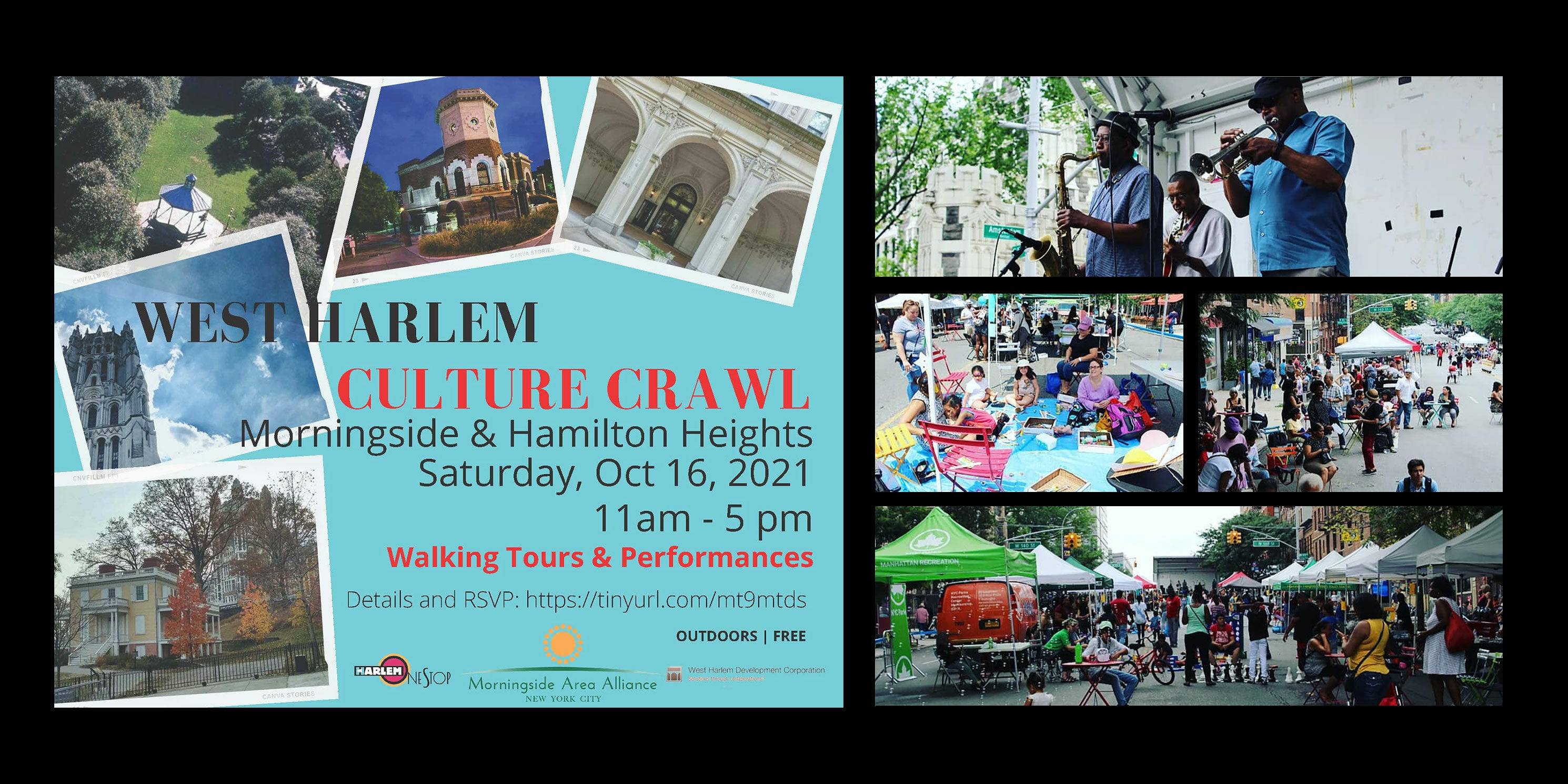
Spencer Williams: Win the battle but lose the war.
Yuien Chin: [Laughs] If you are rigid in your thinking, so focused on one thing, it could blind you to the benefits and advantages and other creative ways that you can navigate the process and still get to where you want to be.
Spencer Williams: Could you talk a little bit more about the difference between listening and hearing? What would be an example of each in your experience?
Yuien Chin: Well, someone may be speaking about whatever the subject might be, and I could just be hearing but not listening to the information.
You are hearing the information, but you’re not actively engaged with that information, you know, and you’re not. When I really listen, I am learning at the same time; I’m thinking, “well, how does this sync up with what I’m doing? What are the possibilities based on this information that I can take something that I’m working on to the next step?” What am I lacking? What do I need to do?” This person has given me all this information, but that person across the room can also fill in some of the gaps that I’m experiencing in this project, you know, you’re constantly evaluating what you have in front of you and what you need to get. If I’m listening, well, I’m in the moment, but when I’m hearing something, I’m not really engaged; I mean, it might be interesting on some level, but you know, I’m not paying any information to the nuances of the argument that is being presented to me. [laughs].
Spencer Williams: Yeah. Having, listening to you then as a deeper form of having heard and internalized the information, a willingness to be changed by it, right? And also, to be humbled by it, right, because then, you talked about the curiosity to go have another conversation, to sort of say what else don’t I know, which is, I think, a good measure of the quality of listening. I have one more question that we’ve touched on a bunch throughout this interview, but as New York City is constantly changing and evolving, what’s one aspect of your neighborhood’s culture that you want to hold onto?
Yuien Chin: Well, it’s evident from my work [laughs]. I want to do as much as possible to preserve my neighborhood’s built environment and its history. That brings me a lot of pleasure. Being able to walk around this beautiful neighborhood and experience these incredible turn-of-the-century row houses and imagine what may have happened in these spaces and those who have walked these streets and avenues, you know, is always fascinating to me. And they’re not just structures, they represent lives, and it never ceases to amaze me. So, when a building of historical significance is threatened with demolition, it really affects me deeply and there is no explanation as to why I should be internalizing the situation as much as I do, but it happens..
But I love this neighborhood and will do whatever I can within my power as a steward for my environment. We all need to decide in our lives what’s important to us and work hard to protect it, and this is how I feel about the neighborhood, and I’m excited by the possibilities. I am now trying to initiate a place-making planning program in West Harlem. This project is rooted in the appreciation for the historic character of the neighborhood and its potential as an economic driver. There are just so many things that hinge on historic preservation. There are so many directions that one could go, and that excites me. I would also like to see an established artisan market in Hamilton Heights and the activation of public spaces. Social interaction in public spaces is so important to community health, and it’s good for the neighborhood. That was why we partnered with DOT to produce public events pre-Covid, and I’m sorry to see the DOT Weekend Walks end. Of course, there is the Open Street program now but the program is somewhat different as the activation of the street comes from outside the community mostly, which defeats the purpose of residents engaging and supporting the local arts organizations and practitioners. I want to see activation of public space in the neighborhood by entities from the neighborhood [laughs].
Spencer Williams: Well, I guess is there anything else you would like to share that we didn’t touch on in our conversation today?
Yuien Chin: Well, I think we talked about our advocacy work, making connections, building communities and relationships, and coalescing and collaborating to achieve one’s objective, but I think one important thing that I may leave with you is don’t burn bridges [laughs]. Don’t burn bridges.
So that’s it for me. I had one experience very early in my advocacy work, and it was a learning point. You never know when you will have to call on others for assistance or support. You might be angry outcomes were not what you expected, and you may be disappointed because someone didn’t do what they were supposed to do or promised to do, and you may have overly and strongly over-articulated a position none of which doesn’t make for a good relationship [laughs].
Don’t burn bridges because you never know when you may have to go back.
Spencer Williams: very, very, very sage advice good advice. Wonderful. Well thanks again!
Yuien Chin: Thank you.
